Interview with Pari Nadimi, director of Pari Nadimi Gallery (P.N) by Emese Krunák-Hajagos (E.K-H)
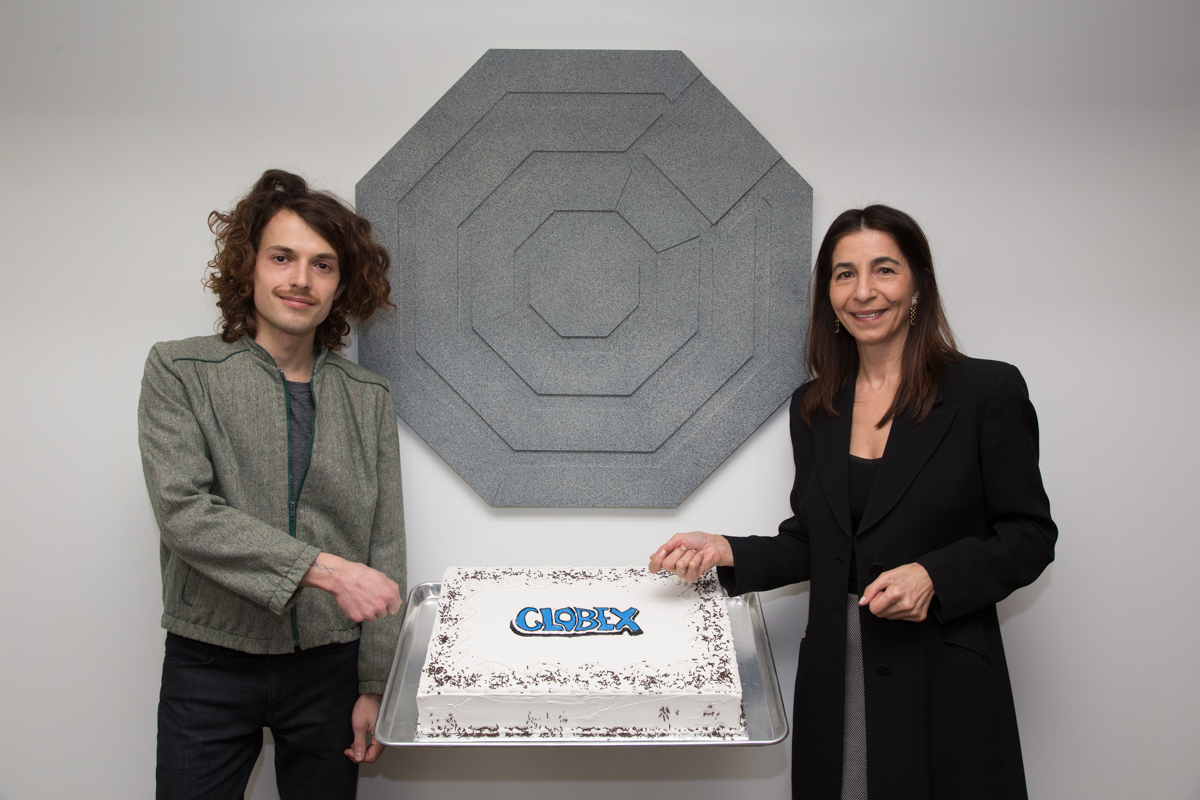 Artist, Felix Kalmenson (left0 with Pari Nadimi Gallery’s director, Pari Nadimi at the Opening Reception of A Year in Revenue, a solo exhibition by Felix Kalmenson at Pari Nadimi Gallery, February 5, 2015. Artworks: Felix Kalmenson, “From the Ground Up”, Lauan plywood underlayment, latex paint and hardware; Felix Kalmenson, “Celebration”, 2015, spackle, styrofoam, baking tray, TV mount and hardware.
Artist, Felix Kalmenson (left0 with Pari Nadimi Gallery’s director, Pari Nadimi at the Opening Reception of A Year in Revenue, a solo exhibition by Felix Kalmenson at Pari Nadimi Gallery, February 5, 2015. Artworks: Felix Kalmenson, “From the Ground Up”, Lauan plywood underlayment, latex paint and hardware; Felix Kalmenson, “Celebration”, 2015, spackle, styrofoam, baking tray, TV mount and hardware.
E.K-H: What made you gravitate toward the art world and eventually open your own gallery? Why did you choose Toronto in 1998?
P.N: I have been in art world since I was 18. I grew up in the museums’ environment starting as an intern (as an art history student) and ultimately working as a curator. I studied art history and archaeology at the University of Rome “La Sapienza” and taught at the same university for a few years. But, my real interest and passion has always been for contemporary art. I can’t say opening an art gallery was my dream, but working with artists, writers, film makers etc. has always interested me. I wish I had lived at the beginning of the 20th century and had been part of the intellectual life in Montparnasse. Perhaps, opening a gallery was an impulse to revive some elements of that dream. I made a conscious decision to make my living by representing artists, particularly cutting edge artists I strongly believed in, and selling their work no matter how difficult it might be. Opening a gallery in Toronto seemed obvious since I was living in Toronto.
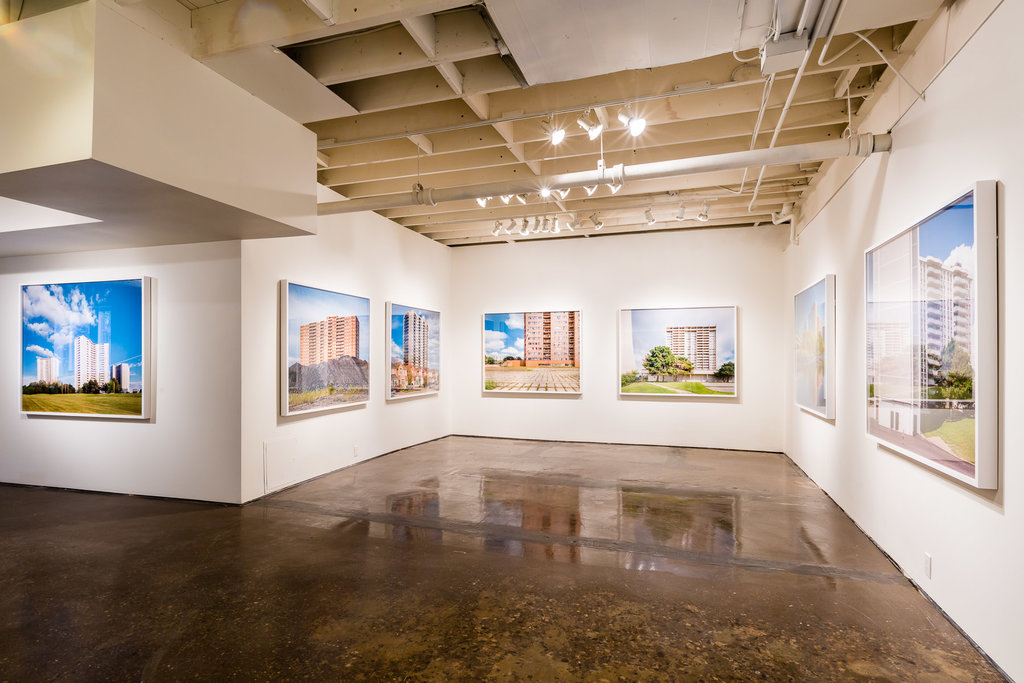 Jesse Colin Jackson, Radiant City, 2014, installation view at Pari Nadimi Gallery
Jesse Colin Jackson, Radiant City, 2014, installation view at Pari Nadimi Gallery
E.K-H: Your mission statement says that the gallery “has established a national and international reputation for its commitment to showing significant artists whose work is ambitious, challenging and intellectually motivated.” Does this still characterize the main goals of your gallery?
P.N: Absolutely, this is still the main line of the gallery and will never change as they are the kind of artists I am interested in and get excited about. If the art is not progressive, challenging and intellectually motivated, then it is not for our gallery.
I don’t choose artists from the market — quite the opposite — we influence the market according our artists’ creativity and progressive artistic ideas. I choose artists whose creativity is not only ahead of the market but also ahead of our time. So, we don’t follow the market, the market follows us. There is no doubt, this is much more challenging for a gallery but I like the challenge — so do the artists we represent. These artists are not artisans, they make art that provokes thoughts, engages the mind and stimulates passion. The gallery’s commitment is to foster these artists who are profoundly ambitious and fearless about using any medium and concept to realize their progressive ideas. These are the kind of artists who force art critics, curators and collectors to get out of their comfort zone and pay attention to the art that is the product of innovative minds, not to mention their ability to skilfully engage the general public. Their work is not about eye pleasing (in some cases it might be on the surface) but an endless discovery process of removing layers upon layers and ultimately building a profound relationship with the viewer.
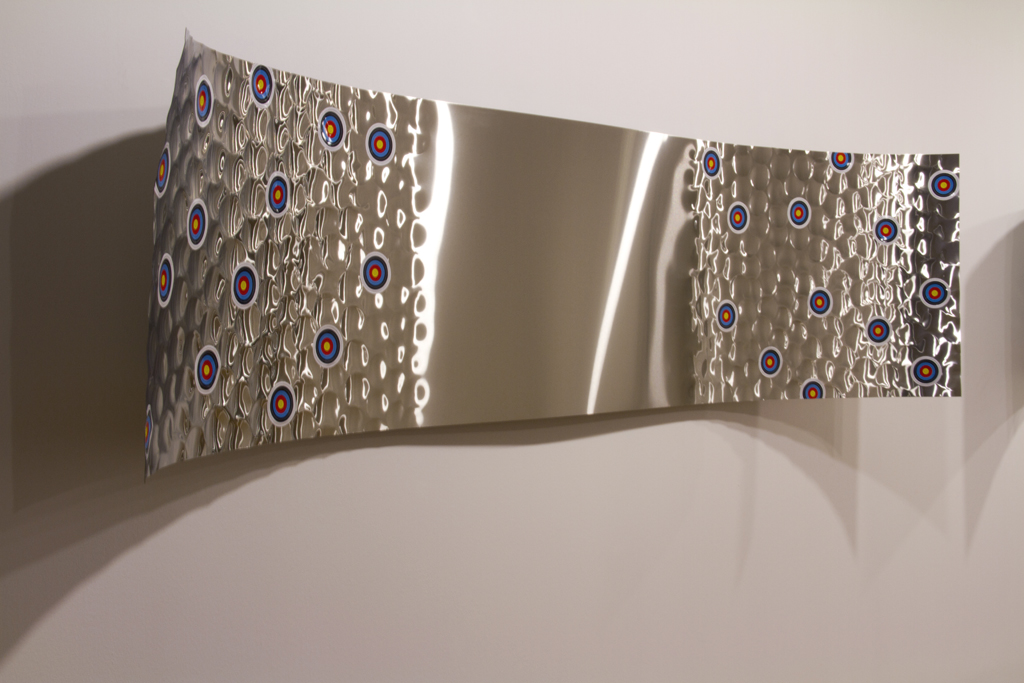 Jennifer Stillwell, “Neutral Center 1”, 2013, hand-hammered stainless steel sheet, stickers, h 2′ x w 8′ x d 1′
Jennifer Stillwell, “Neutral Center 1”, 2013, hand-hammered stainless steel sheet, stickers, h 2′ x w 8′ x d 1′
E.K-H: How do you make decisions about who to represent or show at the gallery? Please describe your curatorial process, in particular, how you choose your exhibition themes and artists?
P.N: This is a question I am often asked. Such decisions come after long research and learning about artists and their work. Keeping a close eye on the national & international art market and press is part of my job; you can’t run a gallery without being aware of what is happening in the art world globally. I am particularly lucky that I speak six languages, which helps me develop awareness of the global art market much faster. I am also interested in the global art market & press because most of our Canadian artists have been extensively exhibiting internationally and we have well known international artists on the gallery’s roster. Curatorial development is like the art making process itself, it evolves continuously. We plan our exhibitions a year or two in advance and that requires constant conversation and meetings. The best part of my job is working closely with the artists in creating exhibitions. All of the exhibitions are the result of the long process of thinking, meeting, and discussions with the artists.
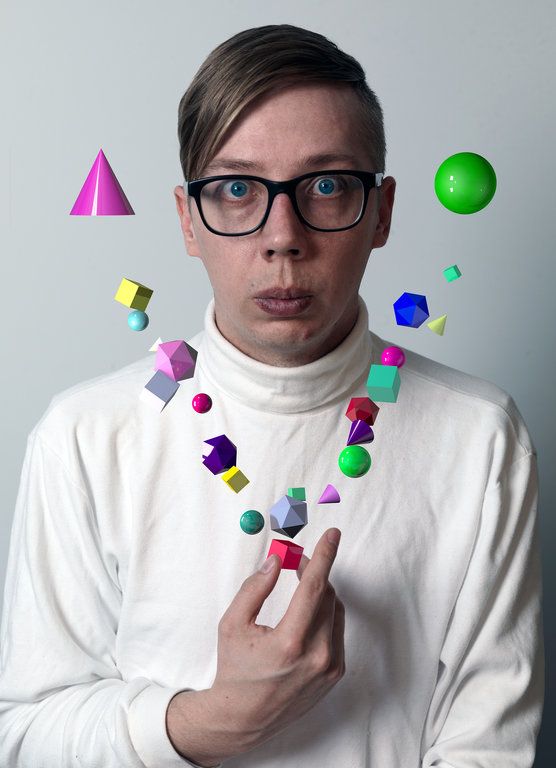 Jeremy Bailey, “Important Self Portrait”, 2013, C print, 58″ x 42″
Jeremy Bailey, “Important Self Portrait”, 2013, C print, 58″ x 42″
E.K-H: All of your artists are unique and highly professional but there the similarities end as they are very different in style. I remember Matilda Aslizadeh’s poetical dying Still Life, Jeremy Bailey’s humorous Important Portraits, and Lucy and Jorge Orta’s work among others. As you look back over the years, is there an artist’s career you’ve watched grow with particular affection?
P.N: I think that is one of the interesting parts of the challenge. Most of the artists in the gallery’s stable are multidisciplinary artists who use different styles and mediums, but if you look closely at their work you can see the threads of dialogue among them, regardless of their style and medium. There is more than one artist whose career I have watched growing with affection, just to mention a few Rhonda Weppler + Trevor Mahovsky, Matilda Aslizadeh, Jennifer Stillwell and Jeremy Bailey who were just out of school when they joined the gallery.
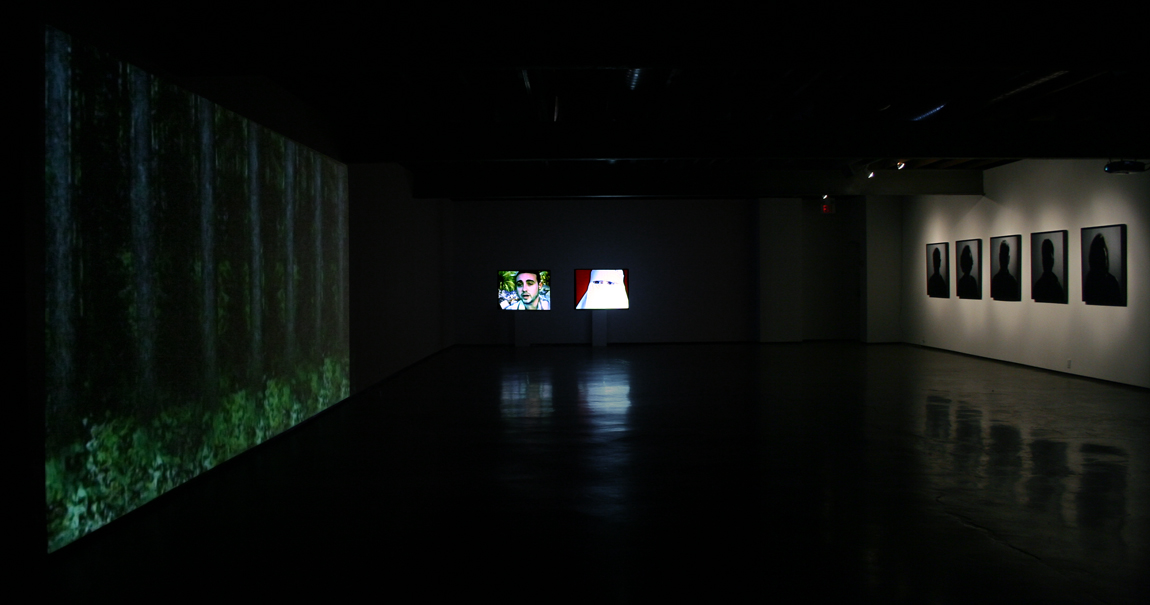 Matilda Aslizadeh, Portrait/Landscape, 2009, installation view, Pari Nadimi Gallery
Matilda Aslizadeh, Portrait/Landscape, 2009, installation view, Pari Nadimi Gallery
E.K-H: Your exhibitions represent all artistic mediums, but it seems that photography has dominance. Is it intentional?
P.N: The gallery’s artists are primarily multidisciplinary artists. They work with all kinds of media and formats. In some cases they use photography itself as a medium to make the work. Most of the photographic works shown at the gallery are not straight photography but are part of an installation, process, sculptural stage work, seconds of video or performance art — so I would hesitate to call them photography in any restricted way.
 Tori Foster (in collaboration with Jesse Colin Jackson), Eight Streetcar Shelters (Day), “Spadina Avenue”, 2011, Chromogenic print, 24″ X 96″
Tori Foster (in collaboration with Jesse Colin Jackson), Eight Streetcar Shelters (Day), “Spadina Avenue”, 2011, Chromogenic print, 24″ X 96″
E.K-H: How did you build up your list of contacts and clients after opening the gallery? Who do you deal with as collectors? How much of an influence do buyers and collectors have on you when creating an exhibition?
P.N: This is the business part of running a gallery and that is like any other business. You need to have entrepreneurial skill to build up clientele. Our clients include national and international art museums, corporate and private collectors. Actually, we influence collectors and not the other way. When they start collecting an artist’s work, they learn more about that artist’s work, and they become part of the gallery’s team — not in terms of influencing the exhibitions — but part of the conversation and the excitement. I have had a few experiences in which collectors attempted to dictate exhibitions, but were immediately rejected.
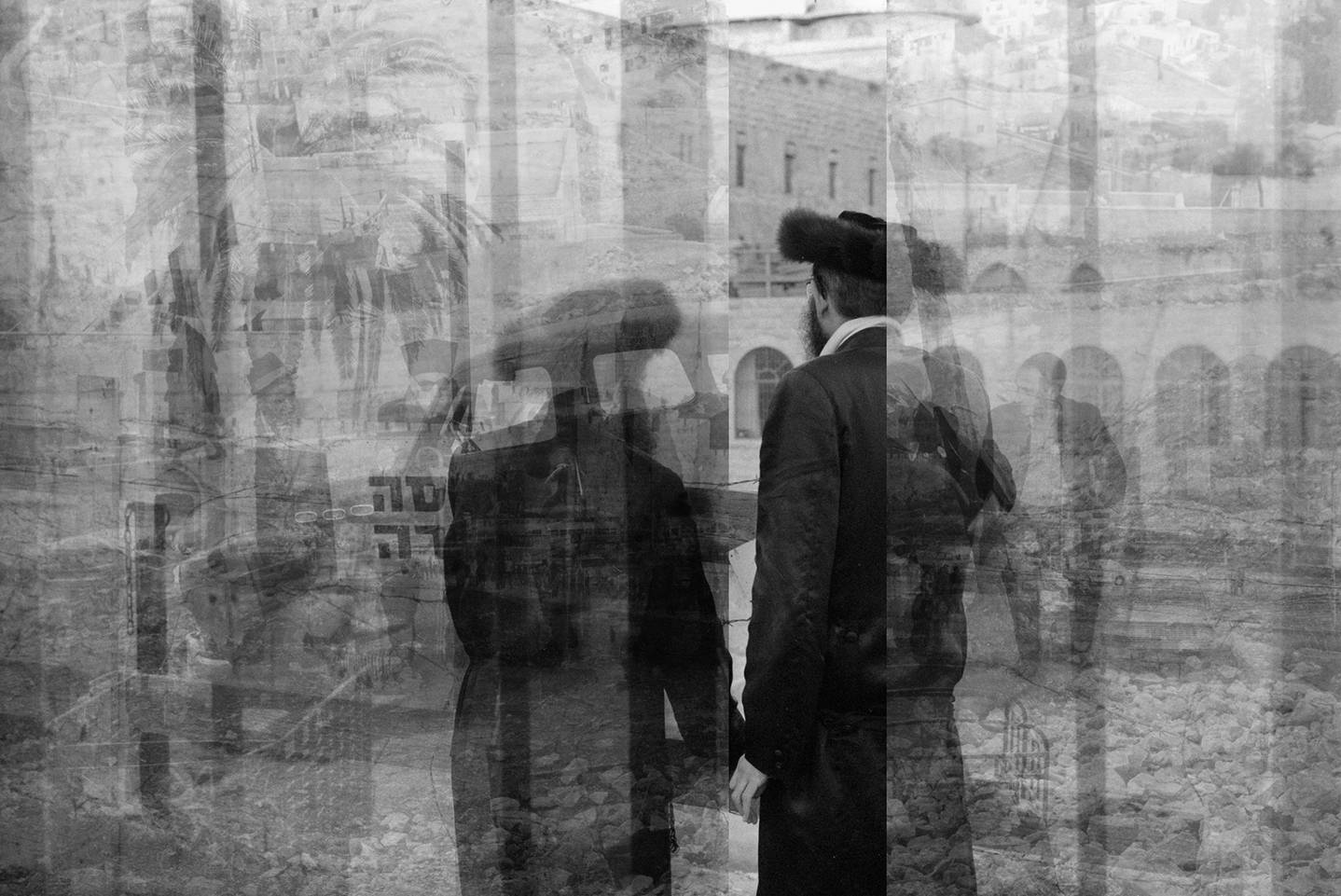 George Legrady, “Gate – Jerusalem”, 2013, lenticular, 31.5″ x 47.5″
George Legrady, “Gate – Jerusalem”, 2013, lenticular, 31.5″ x 47.5″
E.K-H: How does your gallery separate itself from other contemporary spaces in Toronto? What has been your greatest success thus far as a gallery owner?
P.N: Every contemporary space has its own direction, criteria and eventually uniqueness. I think that Pari Nadimi Gallery is quite unique particularly in representing, alongside the Canadian artists, well known international artists and presenting cutting edge exhibitions. You know, success is relative in our business. We can feel success one day and not so much of it the next. Most of us in the art world were successful for many years and then faced the economic downturn for a number years that even forced some galleries to shut down.
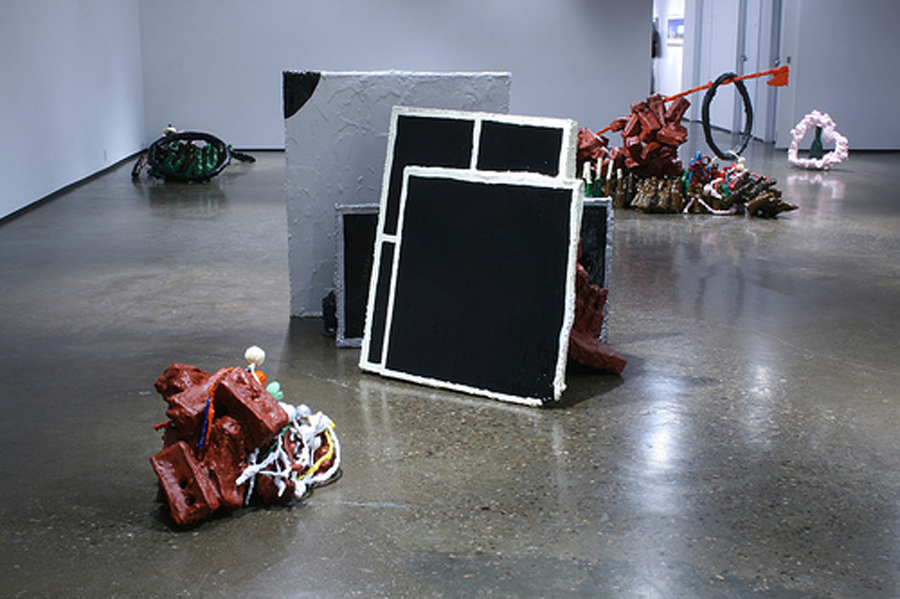 Rhonda Weppler + Trevor Mahovsky, August 1988, 2009, installation view at Pari Nadimi Gallery
Rhonda Weppler + Trevor Mahovsky, August 1988, 2009, installation view at Pari Nadimi Gallery
E.K-H: Art fairs have certainly been proliferating and growing in influence. How has your experience of art fairs been and how important do you think it is to have a presence at these fairs?
P.N: Participating in the international art fairs is definitely vital and it is becoming more and more important. After years of buying domestic art, new collectors coming out of emerging markets such as China, India, and the Middle East are now feeling confident about buying western art. We have been participating at these fairs around the world for many years and the experience has been great, though I have to admit that art fairs, though necessary, are exhausting and expensive.
David Rokeby, “San Marco Flow”, 2005, video still, 2 channel video, exhibited at Pari Nadimi Gallery
E.K-H: In 2004 you moved to a new space with 7500 square feet to “mount increasingly ambitious, museum-quality exhibitions” and you just recently renovated it. What are some of the challenges you face looking towards the future of the gallery? What are your future plans?
P.N: The gallery business is changing with internet and high technology like any other business and we need to keep up with these fast moving changes. Online presence has become indispensable though this doesn’t translate to the elimination of the physical location. You need to have both and work on both sides, continually updating your online presence. Keeping up requires serious devotion. In terms of the future, we plan to participate in more international art fairs outside Canada; to increase our online presence and to open a branch in New York where we will meet our international clients who often go there. We are also planning to partner with some European galleries to reinforce our presence in Europe. This is a plan we had started earlier but postponed due the economic crisis in Europe.
